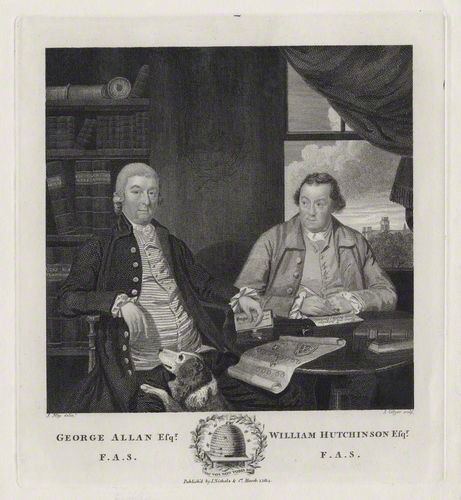Name William Hutchinson Role Topographer | Died 1814 | |
 | ||
Freddie young v william hutchinson 54kg merseyside cheshire aba v scotland
William Hutchinson (1732–1814) was an English lawyer, antiquary and topographer.
Contents
Life
By 1760 he was established as a solicitor in Barnard Castle, County Durham. He was elected Fellow of the Society of Antiquaries on 15 February 1781, and communicated in November 1788 an 'Account of Antiquities in Lancashire' (Archæologia, ix. 211-18). Hutchinson died on 7 April 1814, having survived his wife only two or three days. He left three daughters and a son.
Works
In all his undertakings Hutchinson received assistance from George Allan. In 1785 he published the first volume of his History and Antiquities of the County Palatine of Durham, Newcastle, founded on Allan's manuscript collections; the second volume appeared in 1787, and the third in 1794. His work was carried on while he was prosecuting a lawsuit with the publisher; being unable to find purchasers for the thousand copies which he printed, he disposed of four hundred to John Nichols. Another revised edition was issued at Durham in 1823 in 3 vols.
Hutchinson's other topographical works are:
He also edited anonymously Thomas Randal's State of the Churches under the Archdeaconry of Northumberland, and in Hexham Peculiar Jurisdiction (1779?).
In 1788 he composed a tragedy called Pygmalion, King of Tyre, and soon afterwards another named The Tyrant of Orixa. Both plays were submitted to Thomas Harris, the manager of Covent Garden, but neither was acted or printed. A third play written by him, entitled The Princess of Zanfara, after being rejected by Harris, was printed anonymously in 1792, and frequently performed at provincial theatres.
His other writings are:
In 1776 Hutchinson edited a volume of Poetical Remains by his brother Robert, who had died in November 1773. It was printed at George Allan's private press at Darlington, which also put out many of Hutchinson's Addresses to his subscribers.
He left in manuscript The Pilgrim of the Valley of Hecass; a Tale, and a volume of Letters addressed to the Minister, 1798, by, "Freeholder North of Trent". He had also prepared a copy of his History of Durham, corrected for a second edition, and a Poetical Sketch of his own life.
